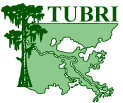Tulane Studies in Zoology and Botany:
Instructions for Authors
Tulane Studies in Zoology and Botany is published by the Department of Ecology, Evolution and Organismal Biology, Tulane University Museum of Natural History, Belle Chasse, LA 70037, and is issued irregularly. Manuscripts dealing with all aspectes of ecology, evolution, and systematics are encouraged. All manuscripts are reviewed.
Page charges are assessed, but some financial assistance is avaliable if authors are unable to meet these charges. Authors are expected to meet extra charges for printing color plates.
Manuscript (with abstract) must be typed on 8.5 x 11 in. paper, double-spaced throughout (including Literature Cited, figure captions, footnotes, and tables). All pages must have 1 inch margins on all sides. Dot-matrix printing is not acceptable; do not justify right-hand margins. Do not hyphenate words at ends of lines. Last name(s) of author(s) should appear on each page with page number; this includes tables and figure captions.
The original and three copies of the manuscript, along with figures, should be submiteed. The revised manucript may be submitted on disc as a WordPerfect 5.0 or 5.1 file. Submit the manuscript to:
The Editor, Tulane Studies
Tulane University Museum of Natural History
Belle Chasse, LA 70037
Footnotes should be kept to a minimum and numbered consecutively throughout the manuscript (except for footnotes in tables). Place footnotes on a separate page.
Words to be set in italics (e.g., binomials) should be underlined (do NOT use italic fonts in the manuscript). Do not underline common abbreviations (e.g., i.e., sp. nov., etc.).
Taxonomic keys should have a centered title. Keys should be of dichotomous, indented construction, and couplets should be numbered. Leads of the first couplet should begin at left margin; each succeeding couplet begins two spaces in from the preceeding one. Run-over lines should be indented three spaces in from the first line.
Papers other than purely revisionary studies should, where relevant, cite voucher specimens of organisms studied. In describing taxa, all specimens should be cited, or a selection of specimens if the list would be unduly long.
In the text, cite literature as follows: For two authors - Smith and Downs (1979) or (Smith & Downs, 1979). For three authors - Meier et al. (1990) or (Meier et al., 1990); full citation of authors must appear in Literature Cited. For papers published by the same author(s) in the same year - Archie (1989a, 1989b) or (Archie, 1989a, 1989b). In press - Smith (in press) or (Smith, in press). Cite unpublished research and personal communications in the text, NOT in the Literature Cited. All references listed under Literature Cited must in fact be cited in the text.
List entries in Literature Cited alphabetically by author, and chronologically for the same author(s). Do NOT use long dash for repeated author(s) name(s). Journal titles should be abbreviated unambiguously (e.g., Austral. for Australian, not Austr.; Zool. for Zoology or Zoological, not Z.). There should be a period and space after each initial of an author's name. Full titles of articles should be used and, except for proper names, without any capitalization; principal words in titles of journals AND OF BOOKS should be capitalized, even if abbreviated.
Each table must be typed on a separate page(s). Do not use vertical lines. All tables must be cited in the text.
All figure captions should be numbered consecutively in Arabic numerals. Figure captions should be placed at end of manuscript, each caption typed as a separate paragraph. All figures must be cited in the text.
Figures should be designed to fit a 5.25 inch width and be no more than 8 inches high after reduction, but allow space for printed figure caption. Mount figure on stiff board with at least 1 in. margin; do not send figures rolled in mailing tubes. Photographs (halftones) should be made for no or little reduction.
Figure lettering must be neatly applied with a lettering instrument or press-on letters securely burnished into place; do not letter figures freehand or with typewriter. All figure lettering must be easily readable after reduction.

